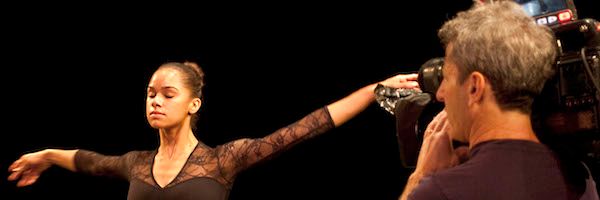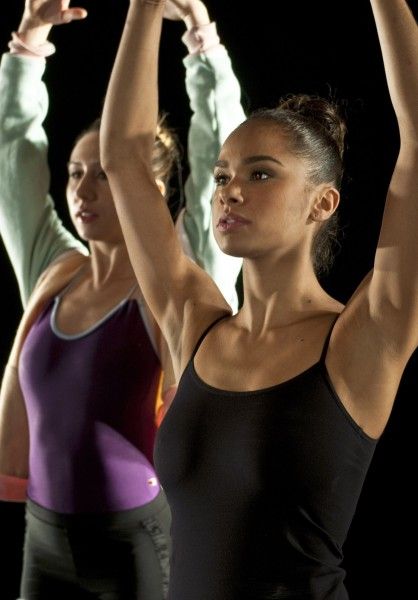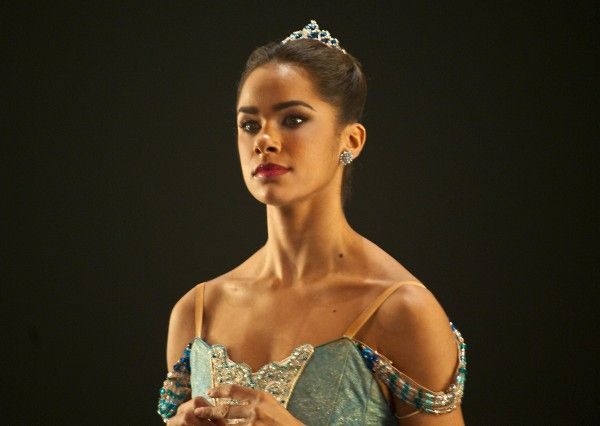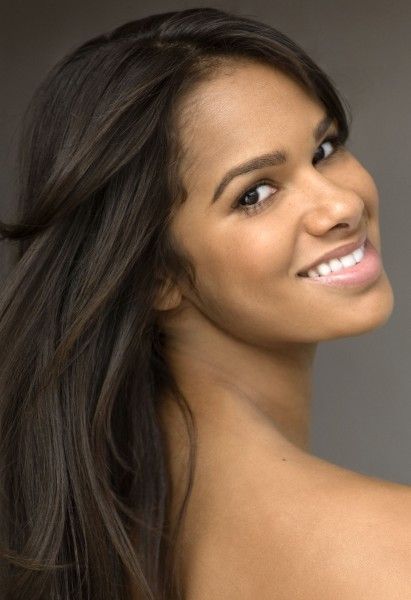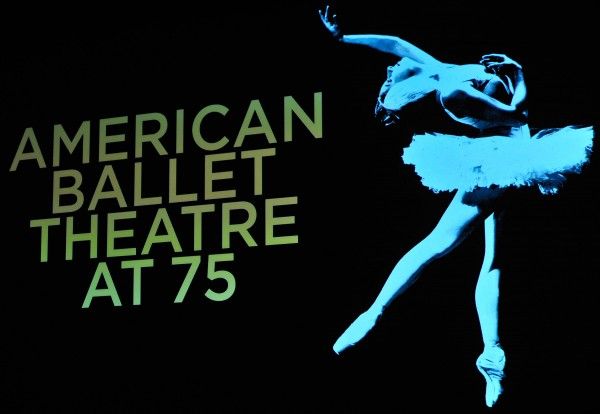Premiering on American Masters on PBS, the documentary American Ballet Theatre: A History, celebrating the company’s 75th anniversary, delves into the rich history of one of the world’s pre-eminent ballet companies. Award-winning filmmaker Ric Burns has combined intimate rehearsal footage, virtuoso performances and interviews with ABT’s key figures from the past and present to showcase why it’s one of the most respected and revered dance companies in the world.
During this exclusive interview with Collider, professional ballerina Misty Copeland (the third African American female soloist and first in two decades at ABT) talked about the incredible honor of being a part of American Ballet Theatre, the importance of making ballet more accessible to contemporary audiences, her experience as a judge on So You Think You Can Dance, that her love and passion for ballet was instantaneous, why her naivete about the challenges of becoming a professional dancer worked to her advantage, why dance is both an art form and an athletic sport, and what keeps her still wanting to be a part of the professional dance world, so many years later.
Collider: What’s it like to be a part of the history of the American Ballet Theatre?
MISTY COPELAND: It’s incredible. Just as a child, before I ever knew what ballet was, there was something in me where I was always searching for something structured, something that was bigger than me, and something so historical that I could be a part of. I didn’t find that until I stepped into the ballet world, and it was overwhelming, the feeling of being a part of something that’s bigger than you. To go to American Ballet Theatre, that was the only company that I was really introduced to. I only trained for four years, so it was crunch time before I became a professional. Everything I was being shown was ABT, so I grew up watching these videos of [Mikhail] Baryshnikov, Gelsey [Kirkland] and Paloma [Herrera]. Paloma and Angel [Corella] were the first people I ever saw dance live. So, to be a part of this history is an honor. I’m following the legacy of so many incredible dancers. Just to get into a company like ABT is a dream come true, but to have all of these opportunities on top of it, I don’t think it will hit me until I’m 70. I’ll be like, “Oh, my god, remember that amazing life you had?” It’s an incredible honor to be a part of something like ABT.
ABT has been around for 75 years now, and has such history and respect.
COPELAND: It’s a beautiful history and representation of what American ballet is today. They set the standards of breaking it out of this European art form and bringing it to more people. They’ve opened the doors to a more diverse atmosphere, celebrating the theater part of what ballet is and the different genres of dance. They were the game-changers, I think.
They’ve really made ballet much more accessible to contemporary audiences.
COPELAND: Absolutely, and that’s everything that I stand for and am trying so hard to do. I think that I’m so fortunate to have found classical ballet. It completely changed my life and it shaped the person that I am today, on and off the stage. So, to be able to articulate that to our youth, and to be a part of something that’s so structured and beautiful can get you to push yourself to heights that I don’t think a lot of people experience in their lives.
You’re also communicating directly with young people, as a judge on So You Think You Can Dance. What’s that been like?
COPELAND: I’m definitely very careful about the things that I want to be a part of, but it’s also important for me to get dance out there to more people. To have a platform like So You Think You Can Dance, where you’re reaching this audience that’s been created over the 10 years that they’ve been on the air. People who didn’t know anything about dance and aren’t going to go to the theater are learning about it, even if it’s ballroom and jazz, by just turning their television ono. They’re building this audience that’s advanced and educated enough to introduce them to ballet. So, I understood the importance of representing ballet, and being a youthful ballerina and someone they can relate to. That makes it seem more accessible.
When you started ballet, was it just instantaneous for you?
COPELAND: Pretty much. My first two or three weeks, I was taking at the Boys and Girls’ Club. I was still like, “What is this that I’m doing?” There were no mirrors. I was in my gym clothes, and I was on a basketball court. It was just very odd, the whole thing. And then, when I got into the studio for the first time, and I was given a leotard and tights, and I could see myself, that’s when it all just clicked. It was like, “Oh, my gosh! I want to learn, every day.” I was so eager to get in there and learn a new step. I literally was learning a new step, every day, to catch up. And then, going on stage and doing ballet, for the first time, was even more verification of, “This is what I’m meant to do. This is what I’m going to do. I’m going to make it somehow.”
Did you know, at that point, how much of an uphill battle that would be?
COPELAND: Being naive to it is what shielded me from getting down on myself, or thinking about what could happen. I was existing in this bubble where I just loved what I was doing and I was working hard, every day. I had the attention of the media in Southern California, from the time I started dancing. The word “prodigy” was thrown around a lot, but I didn’t understand what that meant, or the weight of it. It didn’t really mean anything to me, until I was older and could look back on it. Also, the fact that I was African American was never addressed, and that allowed me to just be a student, like anyone else. I was not aware of how rare it was to be an African American, how rare it was to have four years of training under my belt, and how, even though I could imitate people and fake it, unprepared I was to become a professional. There’s no shortcut around building the stamina, or the years and years of training to have it just be so second nature in your body and in your muscle memory. I had no idea what I was walking into, and the years and years of hard work it would take. I felt like an outsider and like it was never going to happen. But even if I would have known, I think I still would have done it. Dancers are perfectionists, and that’s what keeps us going and growing. If you think about it, you take a ballet class and you do the exact same stuff you’ve been doing since you were three. There has to be something that you’re working towards that keeps it from being this monotonous thing.
Did you have a moment where you made a conscious decision that ballet would be your career?
COPELAND: I was just going and going, and then, after two years, I auditioned for the Music Center Spotlight Awards, when I was 15 years old. That was when it caught the attention of the ballet world. There was someone from American Ballet Theatre that was a judge, and that was the first time they started to see me and my potential for going professional. And then, I was there and I was actually living that life.
Knowing what’s it meant to you, how do you feel when you hear about all of the arts programs that get taken out of schools?
COPELAND: Those people that don’t see the power in art maybe have never been a part of an art, in a real way. To experience it, and to see and witness how it affects people, we’re not doing it just to create professionals. It’s to add another dimension to the way that children think and the way they experience certain things. If you didn’t have dance, music and singing, it just seems so odd to me. I see it, firsthand, with so many kids. For me, I was in school and I pushed myself to be a good student, just because that’s the type of person I was, but I never had a connection to any of it. I don’t think my brain functioned in a way that was at its height, when I was in school. I needed something like art to really value the way my mind works. I wasn’t reaching my full potential by sitting in a classroom and reading from a book. My mind didn’t work that way. I learned how to communicate and articulate myself from ballet. It’s just insane to me, when they don’t think of that as a part of our education.
Dance is more than just an art form, it’s also a sport.
COPELAND: Yeah, and that’s something that I’m constantly trying to articulate, as well. We’re meant to make it look effortless. It’s not easy. When you see the body outside of a costume and see the strength that it takes, people would look at dance a different way and see how athletic it is. You’re not just born like that.
What do you think would most surprise people about what it really takes to succeed in professional ballet?
COPELAND: The strength, not only physically, that can’t just be produced from going to the gym and lifting big weights, and the attention to every single muscle. There are muscles that we have in our feet that most human beings don’t even know that we have. The strength that we have is so detailed. I think most people don’t really understand all that it takes to stand on your toes, and to be able to jump and land without any noise, or for a male dancer to be able to lift a girl. All of these things look so effortless, but there’s an attention to detail and years of training, as well as being able to transform into a character and being able to meld all of those things together. I don’t think a lot of people really understand the commitment it takes to being a character that an actor in Hollywood would take to approaching a role that they’re doing.
Do you remember what it was like, the first time you put on pointe shoes?
COPELAND: I have a photo of myself, literally the first time I put on pointe shoes and stood on pointe. It wasn’t ever a big deal. A lot of the time, my teacher didn’t want to cloud this natural thing she saw unfolding in front of her. She didn’t want to say too much to me. She wanted to see where my natural instinct took me, which was cool. I remember her showing me how to put my pointe shoes on and tie them, but then she just let me go. And I went to the bar, went on one foot and went into attitude. I was just holding on with one hand, and she took the photo. It just always felt really innate in me. It was this extension of myself, putting on pointe shoes.
Did you take to performing on stage as naturally, or did you ever get nervous?
COPELAND: No. I would do talent shows, and stuff like that, when I was younger. When I go and speak to people who actually were on the outside watching me, they’re just like, “I don’t understand how you are who you are now. It makes no sense.” I always attribute that to ballet. For some reason, when I got on stage, I don’t know if it was about not having to speak, because that was terrifying to me, but I just felt so free and at home. The audience couldn’t come on stage and say anything to me, they couldn’t touch me, and they couldn’t criticize me. Well, they’re most likely criticizing you, but you can’t hear it. So, I never experienced getting nervous on stage. I think I was most comfortable there.
Was there a show you had always wanted a role in?
COPELAND: Growing up, I just remember being shown this famous video of Misha and Gelsey dancing Don Quixote. And then, to see Paloma and Angel, that was the first ballet I ever saw with American Ballet Theater. There was something about that ballet where I was like, “I have to be Kitri.” Though I’ve never been Kitri, that is always something that stuck out to me. But dancing Odette Odile in Swan Lake, it still feels like I blacked out and it didn’t happen, even though it did. I can’t believe that actually happened, and that I was given the opportunity to do that. And I’m working on Juliet, right now. I can’t believe that this is my career.
What keeps you still wanting to do this, after so many years?
COPELAND: You have to have it inside of you. At some point, some people are like, “Okay, that’s it. I’m no longer excited about this. It no longer gives me the same satisfaction.” But I’m so not to that place, right now. I just try to approach every opportunity on stage, as if it’s my first time and my last time. Even if I weren’t learning new roles and getting the opportunity to be coached by incredible people, I still think I would be so excited to have an opportunity to continue to push myself and grow, as an artist.
Have you thought about what that next step might be, when you decide that you don’t want to perform anymore?
COPELAND: I know that I’ll forever be involved in ballet. This is where my life was meant to be, and I don’t see myself straying completely away, ever. I think that I’ll forever be a part of the Boys and Girls’ Club, and bring dance through there to reach more communities. Hopefully, I’ll be a part of ABT, in some way, forever. I think I’ll always be a part of ballet and try to push diversity, for as long as I live.
Did you have a point where you realized how rare it is for African Americans to be in ballet?
COPELAND: I was on my own, as a professional, when that happened. I’m thankful for the fact that it wasn’t something that was talked about a lot, growing up. It wasn’t this thing in the back of my head that made me feel resentful. But once I became a professional, maybe 19 or 20, I really started to try to figure out who I was, as a woman and as an individual. Living in New York City, I was fortunate enough to be surrounded by so much diversity. But then, I would step into the studio and be like, “Why am I not represented here?” It was really, really hard for me. And then, I started to doubt my talents, and whether or not I had a place in the ballet world, and whether or not I had a future at ABT, since there really hadn’t ever been a black woman to go all the way. And then, I stepped back and calmed down, and that’s when I really started to research the history of African Americans in ballet. I found comfort in that. Meeting Raven Wilkinson and having her as a mentor, it was that kind of support from the generations that came before me that helped to lift me up and give me the confidence to then be able to give back and bring other minorities with me on this journey.
Do you feel like there is more of an acceptance now, of different types of dancers, than there used to be?
COPELAND: Yeah, and I think ABT has always been that place. But the more that choreography changes and gets more physical, and we’re just exposed to seeing more things, the body naturally changes and adapts to what we’re doing physically. You’re not going to continue to have the same body type in ballet. It just is not realistic. We’re doing much more physical things than they did in 1952, so the body changes along with that. I think we’re much more athletic. It’s what you bring, once you get to that place, if you’re a soloist or a principle dancer. Going on stage and transcending the audience and becoming this otherworldly thing makes you a dancer. It’s not so black and white.
American Masters – American Ballet Theatre: A History premieres on PBS on May 15th.

